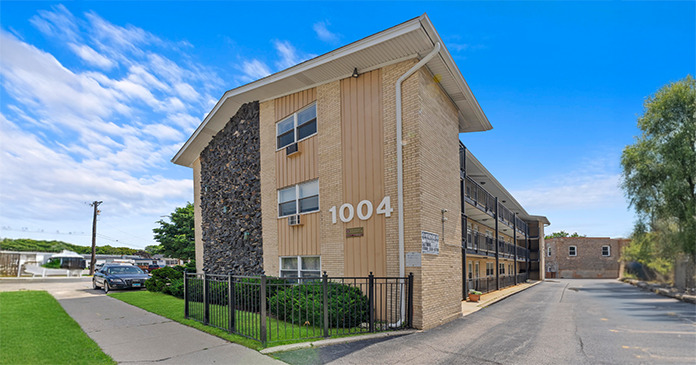I recently saw the motion picture Titanic, again. Since I already knew the ending, it allowed me to take in individual scenes with fuller meaning and definition.
One of those scenes was the moment when the forward lookout realized there was a very large ice cube a few feet from the ship. I wondered if he thought about his uncle who manages twelve, single family homes in Pacoima.
Maybe that’s a stretch, however there is similarity between the two.
What you see on the surface of the conventional multifamily industry is but a glimpse of what lies beneath the surface. While there are limited statistics, a look at the numbers compiled by the National Multi Housing Council (NMHC) gives an overview of the extent of this market.
According to NMHC, there are over 13 million apartment units spanning nearly 3 million communities in the independent rental owner’s market segment. And while this below-the-surface market has a great deal in common with its conventional market counterpart, they are also divergent in significant ways.
These “independent rental owners” have been nationally recognized by groups as prestigious as the National Apartment Association, through the Independent Rental Owners Council, and at the same time, they have been virtually forgotten, passed over and ignored by the majority of organizations developing productivity tools for the industry.
Most suppliers define this group as unsophisticated, small, too hard to market, or too fragmented to effectively develop affordable solutions. After all, on their own, independent rental owners (IROs) do not possess the buying power of an Equity Residential with 225,000 apartment units, or the technological expertise of an Archstone-Smith with a 90-plus-person IT department.
Yet, just as Equity and Archstone, they are rental operators. As rental operators, they have needs related to running their properties as efficiently as possible, with even greater precision than the larger companies because the smaller dollars count. And interestingly enough, this segment of small owners/operators carry more clout collectively than the entire conventional market segment put together.
Small, independent owners/operators share a number of similarities as a group, the first being that they are typically hard working entrepreneurs.
Look at the picture of apartment buildings to the right. Notice the similarity of ownership? Of course not. It’s impossible to differentiate ownership of one apartment building from another simply by sight. Whether they are owned by a Real Estate Investment Trust, an enormous private partnership or an independent rental owner is not evident from this view, the view of the prospective renter. And as such, if the independent owner has access to the same leasing tools as the REIT or private partnership, a renter can neither differentiate a building’s ownership from its operation. Operating with the same strategies and tools of the larger corporate owners levels the rental playing field.
Large and small owners also have a similar gateway to their business: Whether you own a duplex or a 700-unit apartment community, you still rent the units one at a time. Challenges facing the conventional property manager also are faced by the independent rental owner. The need to qualify the prospective resident is of tremendous importance, maybe even more so with the independent owner. Based on the economies of scale, the conventional owner can take more risk than the independent owner in this area. Nevertheless, both are faced with great hardship if the selection process is flawed.
However if you look at the evolution of the screening process, it is certainly skewed toward the conventional owner.
In the past decade, there have tremendous strides in developing processes, integrated relationships and independent scoring models for the conventional owner. On the flip side, the independent owner has been challenged to even find a source for electronic resident screening. The vast majority of independent owners continues to use reports to determine credit worthiness, and are challenged to obtain reports based on recent security changes in the screening industry. One prominent screening company developed and released a product specifically for the independent owner, then pulled the model from production based on regulatory issues in getting independent owners agency-approved for collecting credit data.
Portfolio size is directly correlative to the ability of providers to deliver products to independent owners. Considering the tremendous strides made in the past five years with regard to productivity tools for property management, electronic payments, renter’s insurance, resident screening, Internet advertising, and the list goes on, the overwhelming focus has been to the conventional owner. The independent rental owner has suffered from their inability to act in unison, and create a demand for their market segment.
That, however, may be changing. Organizations such as DIY Real Estate Solutions, a new company based in Ohio, has developed a cost effective, web-based property management solution for the independent owner. The group is a break away from one of the larger multifamily accounting companies, and brings decades of experience from their work with the larger REITs.
Don Katt, chief architect for the product said, “Because of the Internet, we now have the ability to deliver a low-cost, full scope management solution to independent rental owners. Because it’s a subscription based product, the independent owner is not required to purchase an enterprise system for tens of thousands of dollars. Even the less expensive Windows-based product start at $5,000, and falls outside the typical small owner’s budget.”
Don Werner an independent rental owner and early adopter of the DIY product commented, “This is the type of product independent owners have been waiting for. It delivers the functionality we need, at an affordable price. The best part is that these are the same management tools the larger REITs are using. It’s finally available for the smaller owner, as well.”
The DIY product delivers a number of accounting, property management and reporting functions for a nominal monthly subscription.
Katt went on to say, “We also deliver IT support. Whether the user is on DOS or Windows, they are constantly faced with upgrades and managing the technology. With a web-based product, the customer is relieved of those challenges. DIY manages the technology. Upgrades are free and they are instantly applied to the software through the Internet. The customer is left to focus on property management.”
Steve Lloyd, president of DIY talked about how real time integration to service providers change the way IRO are doing business. “These are the tools the small owner needs to level the rental playing field and become more competitive in the market. It’s the same systems the larger management companies have been using for years. They are a sure-fire path to making independent small owners more profitable through productivity.” The DIY system offers independent owners resident screening, criminal background checks, electronic payments, Internet marketing strategies, collections, payables, and renter’s insurance as just a few of the features available. Lloyd continued, “The product is designed to protect the position of our customer in the competitive rental market.”
For the first time, the DIY system allows owners to view their portfolios in real time. Owners can take advantage of alerts and a variety of proactive processes they simply could not do before the advent of this technology.
As the Internet has been the great leveler across many industries and businesses, the small independent rental owner is certain to reap the advantage of a wider sweep of products and services, now and in the future.
Author: Russ L. Sandlin
















